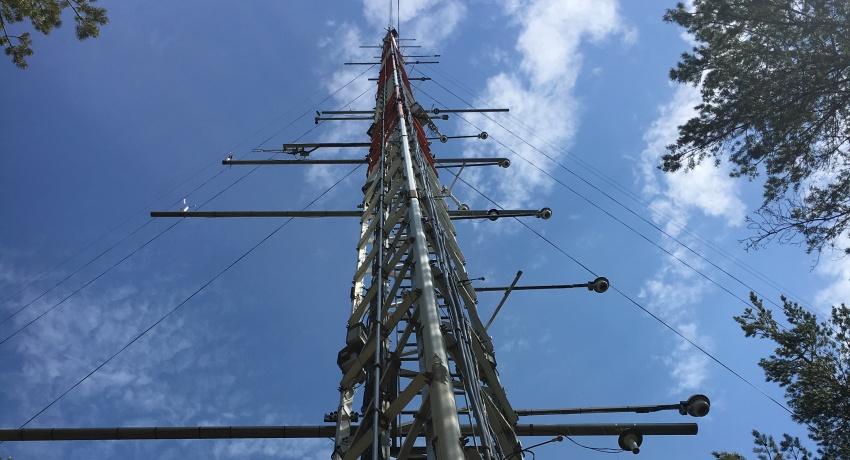The Barcelona Supercomputing Center has produced the first global dataset containing tall tower wind information to boost the use of these data and help deliver trustful seasonal climate predictions to the energy sector.
A tall tower consists of a high vertical pole of 100 metres in which anemometers and vanes can be installed at different heights to measure wind speed and direction. Since the hubs of modern turbines are located at around 100 metres above ground, observations taken at these heights are more accurate than those measured at surface level.
Climate scientists at the Barcelona Supercomputing Center (BSC) have created for the first time a global dataset containing tall tower wind data. The Tall Tower Dataset aims at boosting the use of these data within different sectors, especially the wind power industry and the climate research field.
“A total of 311 tall towers located around the world were identified, and we provide their basic information in the Tall Tower Dataset. Furthermore, we provide the quality-controlled wind speed data from 181 of these towers,” explains Jaume Ramon, climate scientist and PhD student at the BSC, who has been in charge of compiling, formatting and quality controlling all the collected data.
Gathering the data and correcting for errors
The gathering and standardization process of the tall towers’ meteorological data required extensive work. Wind measurements at the heights of wind turbines are not easy to approach, because they usually belong to private companies or are stored in sparse datasets that are difficult to find and use. The first task was to identify all these existing datasets and contact their owner institutions to collect the information. “We exchanged hundreds of mails requesting the data from each of these contacts,” says Ramon.
Once the data were collected, they had to be delivered in a standard format in order to be useful. “We adhered to the CF (Climate and Forecast) conventions, which are widely employed when storing climate data”, specifies Ramon. The quality control process is also key, as it allows to detect errors that would make the data unreliable. “For example, negative wind speeds are physically inconsistent; or too abrupt changes between two consecutive wind speed values are not likely to occur. In both cases, those values have to be removed”, he adds.
Providing the energy sector with trustful seasonal climate predictions
One of the research lines focuses on delivering trustful seasonal climate predictions to the energy sector, especially for wind energy generation. “Scientists have started to use tall tower data more systematically in climate research studies. The verification of climate products, such as reanalysis datasets or seasonal predictions, is one of their potential applications,” Ramon says.
Indeed, the Tall Tower Dataset has allowed to select the reference reanalysis (ERA5) used in the Decision Support Tool (DST) of the S2S4E project to bias-correct the seasonal wind predictions. In this regard, past climatological records are highly needed to increase the quality of those climate predictions.
The creation of the Tall Tower Dataset, which delivers a unique collection of high-quality tall tower wind data from all the continents across the world, has been documented in the Earth System Science Data journal. Besides Ramon, the development of this web catalogue has been made possible thanks to an interdisciplinary team working at the Earth System Services group within the BSC. The expertise of the group ranges from fundamental research in climate and atmospheric composition modelling to the liaison with socioeconomic sectors that can benefit from these services.
The dataset is freely accessible at talltowers.bsc.es.
Written by Jose L. Cánovas (BSC)
Picture: Tall tower at Hyytiälä forest in Finland. Author: J. Yus-Díez


